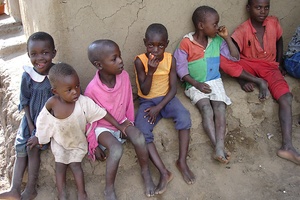Childhood TB: Forgotten but not gone
Tuberculosis (TB) in children is often a neglected issue, in terms of prevention, diagnosis, treatment, and monitoring prevalence. The best numbers we have are from the World Health Organization (WHO), according to Mandy Slutsker of ACTION, an international partnership of global health advocates. The WHO reported in 2009 that every year more than 1 million children get infected and about 176,000 die as a result. However, since most cases go unreported, the numbers are likely much higher, she said.
More than half of the cases reported to WHO came from just three countries – South Africa, Indonesia and Pakistan, Slutsker said. Mozambique and Zambia were among 40 countries that reported no cases of pediatric TB to the WHO, although the U.S. Agency of International Development ranks them both on the list of the highest burden TB and drug resistant TB countries in the world, respectively. Meanwhile, 40 percent of children exposed to TB in Africa are likely to develop the disease before their first birthday, according to Slutsker. She joined advocates and experts from government agencies and NGOs Thursday at a meeting on the topic hosted by Treatment Action Group (TAG) and cosponsored by the Center for Global Health Policy.
Children that are living in poverty, less than two years of age, malnourished, and orphans and vulnerable children are particularly vulnerable to acquiring TB. Approximately 9.7 million children have been orphaned by tuberculosis, comparable to the number of HIV/AIDS orphans. Children with HIV are also 20 times more likely to develop TB than healthy kids, Slutsker said.
The only vaccine effective against TB – The Bacille Calmette-Geurin (BCG) vaccine – is recommended for newborns in most countries and has been around since the 1940s. Although it protects children from the most severe types of TB – like TB meningitis – it does not for most other forms of TB. And as the child grows older its protective benefit wears off. Children with HIV – a huge population that would benefit from vaccination – can have an adverse reaction to BCG. One in three child AIDS deaths is caused by tuberculosis, Slutsker said. Moreover, there are no child-friendly TB treatment options like fixed dose combinations or chewable tablets, and children often are excluded from research trials investigating new drugs.
Regarding diagnosis, only five to ten percent of childhood TB is detected using smear microscopy – a procedure requiring a sputum sample, which is difficult for children to provide, said Jeffrey Starke, MD, a professor of pediatrics at Baylor College of Medicine who also works at Texas Children’s Hospital. In comparison, 60 to 75 percent of adults are diagnosed using smear microscopy. (The notable exception to this is adults with HIV infection where smear microscopy routinely misses half of all cases of TB disease.) In developing countries as much as 40 percent of TB cases might be in children, Starke said, and account for ten percent of childhood hospital admissions and deaths.
Throughout the world many of the adults living with TB were actually infected when they were children, which means the opportunity to intervene when they were young was missed, according to Starke. Latent TB in children can progress quickly to active disease, but it provides a good opportunity to intervene and prevent the spread of the disease later down the road.
“Effectively deploying [isoniazid preventive therapy or IPT] among latent TB infected children would possibly save more lives than BCG vaccination,” Starke said. “There’s probably more TB now than at any other time in the history of mankind.”
Starke and his team at Baylor require a three-part diagnosis for children: a positive skin tuburculin test (TST), an abnormal chest X-ray and/or physical exam, and history of recent contact to an infectious adult case of TB. “For half of the children who we are quite sure have TB disease, we can’t find the organism,” Starke said.
The need for new diagnostics and treatment for TB in children is clear, but there is very little research being done and funded as compared to adult research. Starke said the reasons TB is neglected in children as compared to other diseases like HIV and malaria are various, including difficulty confirming diagnosis, the fact that children are rarely contagious which makes them a public health “dead end,” and the perception from policymakers that treating adults is enough.
But there is some good news, Starke said. There is improved advocacy on the international level giving more visibility to the issue; increased research capacity is being developed in high burden countries; and recently children have been included in major research efforts. Still, there is much work to be done, including creating improved diagnostics, pediatric dosing of new and old drugs, better infection control efforts in health systems especially, improved contact tracing and a better vaccine.
By Meredith Mazzotta
Science Speaks
http://sciencespeaksblog.org/2012/01/09/childhood-tb-forgotten-but-not-gone/


